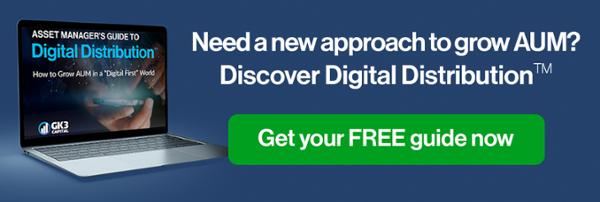“Digital-first experiences are redefining the thresholds of customer experience,” according to a recent study by McKinsey on the asset management industry.
Asset managers must create an online experience that highlights their unique value. To capture flows, your website must provide the information that allocators, advisors, and investors seek.

Every successful asset manager website educates visitors on the “5 P's.” In this article, we will highlight topic #3 of the “5 P's”: Price.
 An Overview of Topic #3: Price
An Overview of Topic #3: Price
If a potential investor likes a strategy or fund, the next question is: “what does it cost?” By answering that question, investment can follow.
Investors want to understand costs before they invest. Costs can include management and incentive fees, as well as other expenses borne by investors. Costs can also include indirect expenses such as liquidity, which may require further explanation.
Price transparency is paramount. Disclosure of costs can accelerate the investment decision. Investors also want to determine if the price is commensurate with the performance and the risk.
Investing is inherently competitive. For many strategies, the proliferation of ETFs means that competition is accelerating. Whatever the investment structure, pricing is an integral part of the process.
The fee discussion is particularly important for active managers. According to industry consultants Greenwich Associates and Callan, the “most frequently cited concern regarding fees: Whether or not active managers are providing the value added to justify the fees.”
Asset managers who educate investors on pricing can win the allocation.
Discussing Price: Tables, Charts, and Blogs
Tables and charts can help provide a user-friendly means to explain fees and expenses. In fact, regulations mandate the elements of fee and expense charts and disclosures for registered funds.
Blog articles provide a flexible platform to discuss pricing, particularly if the pricing issues are complex or require explanation.
For example, a blog post about price could review the fee structure of a fund or asset manager and the various factors that influence the cost of its products and services.
A blog post could also compare a firm's fees to competitors and highlight the value that the asset manager provides to its clients in relation to the price they pay.
Explain Complexity
Education is the solution to explaining a complex fee structure, such as those associated with private real estate funds.
The fees and costs for private real estate fund can change over a fund’s lifecycle as different services are provided. Different teams or service providers may lead an acquisition, provide financing, manage and lease a property, and pursue a property sale. A different fee or expense may be associated with each of these stages or services. Helping investors understand the sequence and resulting value is critical to an informed investment decision.
At GK3 Capital, we created a blog for a sponsor of tax-favored real estate investments, who sought to explain the expenses within a Delaware Statutory Trust (DST), a common structure in tax-free exchanges of real estate. For the blog, we created a straightforward table illustrating the potential fees and expenses across the life of a real estate fund.
 Observers have noted that pricing in the asset management industry is both an art and a science. Asset managers must also master the process of educating investors about pricing.
Observers have noted that pricing in the asset management industry is both an art and a science. Asset managers must also master the process of educating investors about pricing.
Next Steps
Read the next blog in this 5-part series on the key topics for asset manager websites that help drive inflows:
#4: Performance
To reach the next level in web-based sales and marketing for asset managers, watch our video series or download our eBook on Digital Distribution.

John Gulino
John Gulino is the Founder and CEO of GK3 Capital LLC. Experienced in all facets of distribution including management, direct sales, training, and development, John has been fortunate to represent some of the industry’s most respected and innovative financial institutions and has consulted with many more of the top asset management firms in the industry on how to better align their sales and marketing efforts.




 An Overview of Topic #3: Price
An Overview of Topic #3: Price Observers have noted that pricing in the asset management industry is both an art and a science. Asset managers must also master the process of educating investors about pricing.
Observers have noted that pricing in the asset management industry is both an art and a science. Asset managers must also master the process of educating investors about pricing.